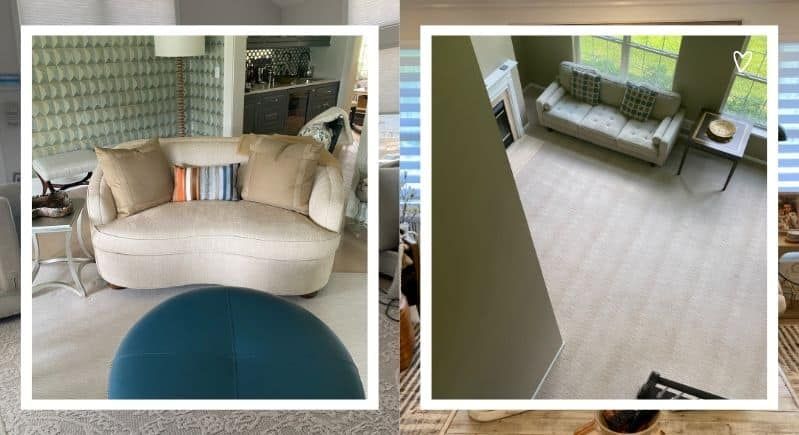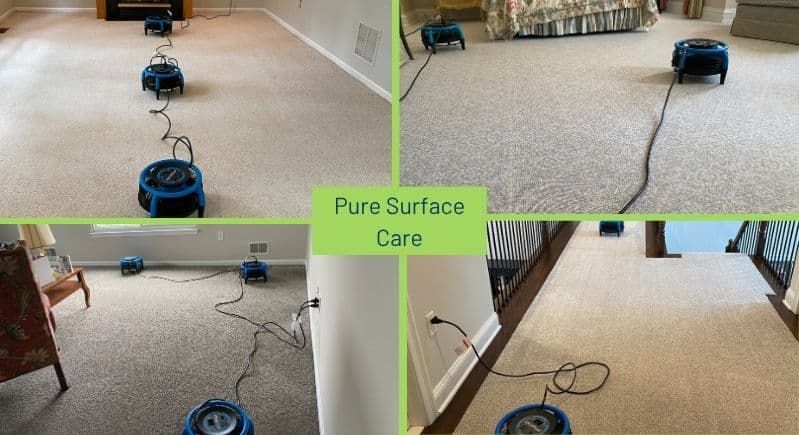Understanding Upholstery Fabrics and Why They’re Different from Carpets

Table of Contents
ToggleMost people think of carpets when it comes to cleaning. That makes sense, carpets catch soil from shoes, spills, and daily use. What many forget is the fabric on furniture. Sofas, chairs, and cushions wear down in different ways, and these issues often become apparent over time.
On the surface, a couch may not look very different from the carpet beneath it. Both are textiles, both trap soil, and both can be cleaned. But here’s the truth: upholstery fabrics are constructed in different ways than carpets, and they require a completely different approach to care.
Understanding the difference matters for two reasons. First, your furniture is often one of the biggest investments in your living space. Second, upholstery sits closer to the people and pets you love. That means any cleaning should be safe, thorough, and handled with the proper knowledge.
Upholstery Fabric Basics
Carpets are built tough. Carpets are usually made from durable synthetic fibers such as nylon, polyester, or olefin. These fibers are designed to resist abrasion, withstand high traffic, and hold up to more aggressive cleaning methods.
Upholstery is built for comfort and style. That means manufacturers often use blends of delicate natural fibers, like cotton, linen, silk, or wool, mixed with synthetics for added strength. Each fiber reacts differently to water, heat, and cleaning solutions.
Here’s where things get tricky:
- Cotton absorbs water quickly and can take a long time to dry.
- Linen may show rings or browning if it’s overwet.
- Silk is elegant but highly sensitive to both moisture and sunlight.
- Wool resists soil naturally, but can shrink or felt if handled the wrong way.
Unlike carpets, upholstery often combines multiple fibers in a single fabric. Add in decorative weaves, textured surfaces, or specialty finishes, and you can see why a “one-size-fits-all” cleaning method doesn’t work.
Common Challenges in Upholstery Care
Even when furniture looks simple, the fabrics carry risks that carpets rarely do. A few examples:
- Color bleeding – Dyes can migrate when exposed to moisture, leaving uneven spots.
- Crocking – Colors transfer when the fabric is rubbed, even without water.
- Shrinkage – Natural fibers pull in when they absorb moisture, changing the fit of the fabric.
- Fabric distortion – Velvets and pile fabrics can look crushed or streaked without proper grooming.
These aren’t issues you’d usually worry about in a carpet. But with upholstery, they’re part of the reason cleaning requires a more careful, measured process.
Why Professional Knowledge Matters
Because upholstery fabrics react so differently, cleaning them properly isn’t just about tools; it’s about knowing the material. A professional begins with a pre-inspection, identifying the fiber types and testing for color stability. They’ll consider weave, texture, age, and any specialty finishes before they even pick up a cleaning wand.
This process helps determine the right method: low-moisture foam for delicate fabrics, solvent-based cleaning for unstable dyes, or hot water extraction for durable synthetics. Each choice reduces risk and ensures the fabric is cleaned without damage.
When you compare that to carpet cleaning, you start to see the difference. Carpets can be handled in broader strokes, while upholstery requires a more customized approach.
Why IICRC Certification Matters
Upholstery care isn’t something that should be left to guesswork. While anyone can rent a machine or buy a bottle of cleaner, the results are often uneven and sometimes harmful. That’s why the Institute of Inspection, Cleaning and Restoration Certification (IICRC) plays such an important role in the industry.
The IICRC sets the standards for textile and upholstery care. Certified companies follow training that covers everything from fabric identification to safe chemical use and proper drying methods. This knowledge is what helps protect furniture against problems like shrinkage, color bleeding, or browning.
For homeowners and businesses, choosing a certified provider means your furniture is cared for with methods designed specifically for fabric, not carpet or hard floors. That difference protects your investment, extends the life of your furniture, and keeps the environment inside your home or business healthier. To learn more about our complete floor and upholstery cleaning services or explore how we handle professional upholstery cleaning in Monmouth County, you’ll find details on the safe solutions and standards that guide every job.
Pure Surface Care’s Approach
At Pure Surface Care, upholstery cleaning isn’t treated as an afterthought to carpet; it’s a dedicated service with its own methods, solutions, and training.
Our upholstery process is built around three commitments:
- Specialized techniques – We don’t apply carpet methods to fabric. Each piece is tested, pre-treated, cleaned, and groomed according to its fiber and weave.
- Safe chemistry – We use cleaning solutions formulated for upholstery, designed to lift soils without leaving residues or damaging fibers.
- Certification-backed care – As an IICRC certified company, we apply standards that go beyond appearance. Our goal is to protect your furniture’s look, feel, and lifespan.
From natural cotton sofas to microfiber sectionals, every fabric gets the attention it needs.
Why This Matters for You
Your furniture is part of daily life. The chair you sit in, the sofa your family uses, the sectional where friends gather. With time, every piece collects soil, oils, and dust you don’t always notice. Regular care keeps it cleaner and helps it last longer.
Whether at home or in a business, upholstery needs care that isn’t the same as carpet. Knowing how to handle it the right way prevents damage, protects its value, and keeps it looking good.
Final Word
Carpets and upholstery may look similar, but they live in two different worlds. Carpets are durable workhorses; upholstery is a blend of beauty, comfort, and complexity. Caring for them properly requires more than just equipment; it requires knowledge, safe chemistry, and certification.
That’s why upholstery deserves its own expertise, and why working with a certified company makes all the difference.
Need Professional Help?
Call 732-592-9000
Visit Pure Surface Care for more information.
Other Blogs You May Be Interested In








